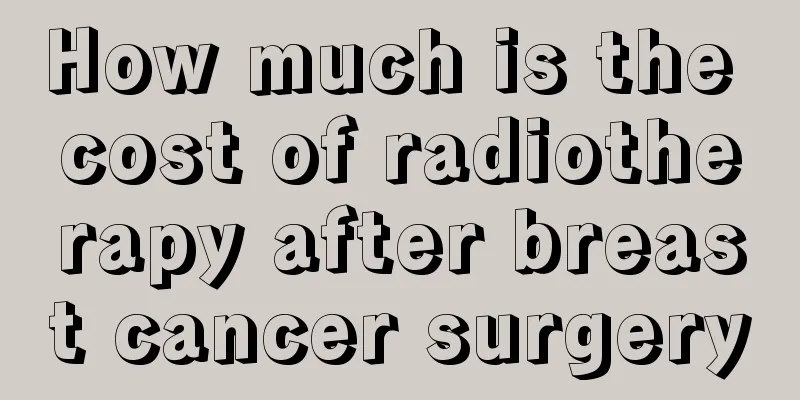What is the cause of luteinized follicles?

|
Follicle luteinization refers to the symptoms of infertility in women, but what is the cause of follicle luteinization? Many female friends need to understand this. Because fertility issues are a serious problem for family life, many couples divorce because of this reason. Therefore, female friends attach great importance to this problem, so once the cause is found, timely treatment can be carried out. Generally speaking, this situation can be improved, so we need to pay more attention to it. 1. Central endocrine disorders. Ovulation is a complex process involving the coordinated action of multiple hormones. Central endocrine disorders can directly affect the growth and development of follicles and the occurrence of ovulation. Studies have shown that the ovulation process is stimulated by the peak secretion of LH/FSH, mainly by LH. When the central endocrine system is disturbed due to various reasons, the LH peak secretion level is insufficient, and the LH secretion amount does not reach the threshold, it cannot stimulate the biochemical and histological changes that lead to the digestion and rupture of the follicle wall. However, it can lead to the restart of meiosis and luteinization of follicular cells, secretion of progesterone, and the "pseudo-ovulation" phenomenon in which the follicle is not released but the progesterone level is elevated. However, some studies have reported that LUFS is not related to LH levels. Other studies have reported that the effect of LH during LUFS is due to a decrease in the amount of LH receptors. Luteinization of follicles 2. Local obstacles. Endometriosis and pelvic inflammatory disease can cause pelvic adhesions, resulting in non-rupture of follicles and anovulation, but endogenous LH can promote luteinization of follicular cells. Studies have shown that it occurs after ovarian surgery and is mainly related to sparse membrane-like adhesions on the surface of the ovary. In addition, oophoritis or even subclinical oophoritis is also a local factor that causes thickening of the ovarian epithelium and leads to the occurrence of LUFS. 3. Enzyme or kinase deficiency or defect or prostaglandin deficiency. The production of enzymes is also the result of the action of LH and FSH. Insufficient LH affects the increase of CAMP, thereby reducing the activity of fibrin and plasminogen activator in the ovaries, which can reduce the activity of plasminogen on the follicular cells before ovulation, affecting the dissolution of fibrin and the self-function of the follicular wall. Proteolytic enzymes also play a role in follicle rupture, and the lack of these enzymes inhibits ovulation. To sum up, this is the reason for luteinization of follicles. We understand that this is closely related to the conditions of the female body. However, according to the development of modern medicine, it can be treated later. It is necessary to change the ovulation situation in women and supplement some substances that are lacking in the body. Eat more foods rich in vitamins to supplement nutrients. |
<<: Why is it that I can’t breathe?
>>: How to completely solve premature ejaculation?
Recommend
The incidence of stomach cancer increases among young people
As the incidence of gastric cancer in young peopl...
What does rough gallbladder mean
Many people are not familiar with the term "...
Will staying up late cause constipation?
There are many harmful effects of staying up late...
Can I have massage for a three month old baby?
In daily life, many people have the habit of mass...
Black bloodshot eyes
Some people may have encountered the phenomenon o...
How does leucorrhea with mixed blood produce small cervical cancer? What should we pay attention to in preventing cervical cancer?
Leucorrhea with bright red blood or leucorrhea mi...
Can I still have surgery if liver cancer recurs? There are four major misunderstandings
Can surgery be performed if liver cancer recurs? ...
Symptoms of vitamin ad deficiency
The body may lack many vitamins and trace element...
Should I apply foundation or sunscreen first?
Foundation and sunscreen are both cosmetics. Girl...
What are the rhomboid muscle training methods
In today's life, many people have paid extrem...
What are the symptoms of liver cancer in the late stage when one is about to die? There are four types
What are the symptoms of advanced hepatobiliary c...
What should I pay attention to during Sanfutie
Many people think that Sanfutie is an auxiliary p...
Is the white mud on the face keratin?
The white mud rubbed out on the face is keratin. ...
Will glioma occur
Brain glioma is a modern tumor that is extremely ...
What are the examination methods for thyroid cancer
What are the methods for checking thyroid cancer?...









